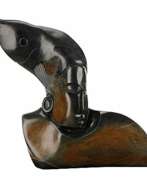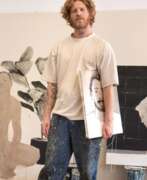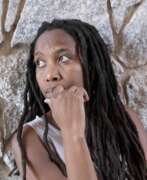Zimbabwe Contemporary art
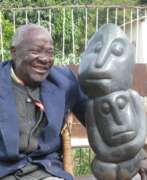

Fanizani Akuda is a self-taught sculptor from Zimbabwe, born in Zambia.
He was working as a stonemason in a quarry when he got his hands on a tool and created his first stone sculpture. With his own unique style, Fanizani was able to convey human emotion in stone with talent. His work can be recognized by the slitted eyes, rounded shapes, cheerful and smiling faces, and his themes are also happy families, human and animal interactions, often in pairs or groups. Fanizani also liked to carve whistle sculptures.
Thanks to Fanizani and his unique stone sculptures, Zimbabwe is internationally recognized today.
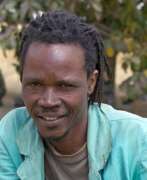

Wonder Luke is a Zimbabwean sculptor.
Like many artists in Zimbabwe, he was a simple laborer in the fields until he found himself on a sculptor's farm. Wonder Luke has found his unique style and creates human heads of various sizes, with soft and pleasing facial features and various emotions. His work is a great success among connoisseurs.
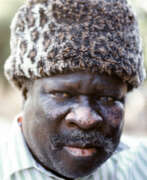

Bernard Matemera was a Zimbabwean sculptor. The sculptural movement of which he was part is usually referred to as "Shona sculpture", although some of its recognised members are not ethnically Shona. His whole professional career was spent at the Tengenenge Sculpture Community, 150 km north of Harare near Guruve.
Matemera sculpted mainly in grey or black serpentine, finishing his work to a uniform polished surface. His subjects were animals, people or fantasy spirit creatures. None were rendered in a true-to-life way: he preferred to show exaggerated curves of breast, buttock or belly-button to reveal the relationship between humans, animals and the spirit world.
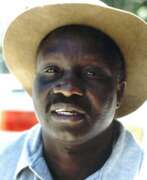

Richard Mteki is a Zimbabwean sculptor and master stone carver.
Influenced by his older brother, sculptor Boira, he began sculpting at the Nyarutsezo Art Center in the 1960s. And Richard is considered one of Zimbabwe's most successful artists. The power and fluidity of the lines of his unique sculptures demonstrate his remarkable talent.
Mteki is a first-generation sculptor who draws most of his work from the beliefs of the Shona people, although he is also inspired by nature, depicting animals in his own unique style. For Mteki, the form of raw stone is important, and he prefers to work with the stone rather than impose his will on it.
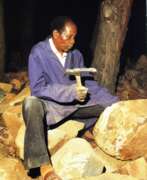

Henry Munyaradzi, known simply as Henry, is a self-taught Zimbabwean sculptor, a representative of "shona sculpture.
Before he got his hands on an instrument, Henry was a common laborer and never attended school. His sculptural work combines the simplicity of the primitive with stylized sophistication. He has great respect for the stone he uses and is often inspired by the original form. Henry has achieved outstanding success internationally, holding individual and group exhibitions around the world.
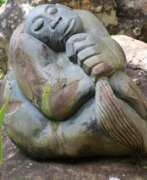

Joseph Ndandarika is a Zimbabwean sculptor known for his figurative works.
At first he specialized in pictorial landscapes and witchcraft scenes. In 1962, Ndandarika became known for his work Bushmen Running from the Rain. Gradually he switched to stone sculpture, depicting mainly domestic scenes. During the Zimbabwean art revival of the 1980s he was one of the country's first prominent sculptors.


